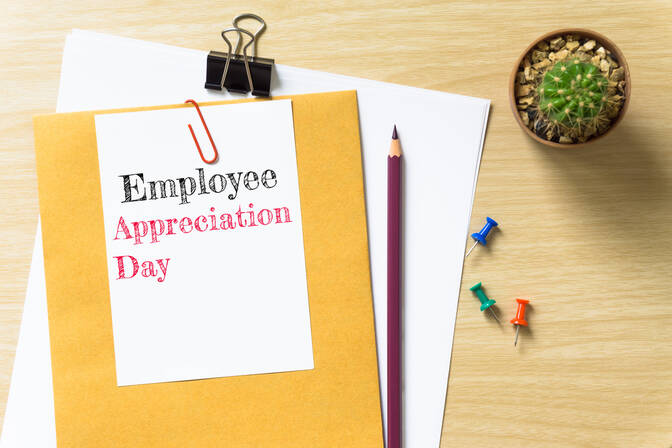Día Nacional de Apreciación a los Empleados
7 de marzo, viernes

Contexto histórico
El Día del Empleado fue introducido por primera vez en 1995 por Bob Nelson, uno de los líderes del movimiento de reconocimiento a los empleados, y desde entonces se ha convertido en una tradición importante en muchas empresas. Fue creado como complemento al Día Nacional de los Jefes en EE.UU. para recordar a los empleadores sus responsabilidades hacia su personal y mostrar reconocimiento por su trabajo.
Tradiciones y formas de celebrar
Reconocimiento de logros. En este día, muchas empresas celebran ceremonias de premiación que destacan a los empleados que han demostrado una productividad o contribución particular al equipo. Algunas empresas también pueden seleccionar a los mejores empleados del mes o año otorgándoles certificados, premios o bonificaciones.
Eventos y fiestas corporativas. Se organizan almuerzos, fiestas o eventos fuera de las instalaciones para los empleados. Las empresas pueden organizar actividades de team building, como competiciones deportivas, picnics o misiones, para que los empleados se relajen y establezcan vínculos entre sí.
Regalos y bonificaciones. Una forma popular de expresar gratitud es dar obsequios, bonificaciones o días adicionales de vacaciones pagadas. Algunas empresas regalan a sus empleados souvenirs de marca, vales para el almuerzo o la cena y, a veces, vales para compras o entretenimiento.
Horario flexible. Para mostrar preocupación por los empleados, algunos empleadores ofrecen horarios de trabajo más cortos en este día o permiten que las personas trabajen desde casa. Esto es especialmente apreciado por los empleados, ya que les permite conciliar mejor el trabajo y los asuntos personales.
Cartas personales y reconocimientos en redes sociales. A veces, los gerentes escriben notas personales de agradecimiento a los empleados reconociendo sus contribuciones y logros. Muchas empresas también comparten los éxitos de sus empleados en las redes sociales, enfatizando su importancia para el equipo.
Día Nacional de Apreciación a los Empleados en otros años
- 2022 4 de marzo, viernes
- 2023 3 de marzo, viernes
- 2024 1 de marzo, viernes
- 2026 6 de marzo, viernes
